

Matt Campbell
2025 Porsche 911 Carrera T review
6 Days Ago
Has Alfa Romeo finally delivered a sedan that can be recommended without caveats? Not quite, but the Giulia Veloce still has plenty to offer.

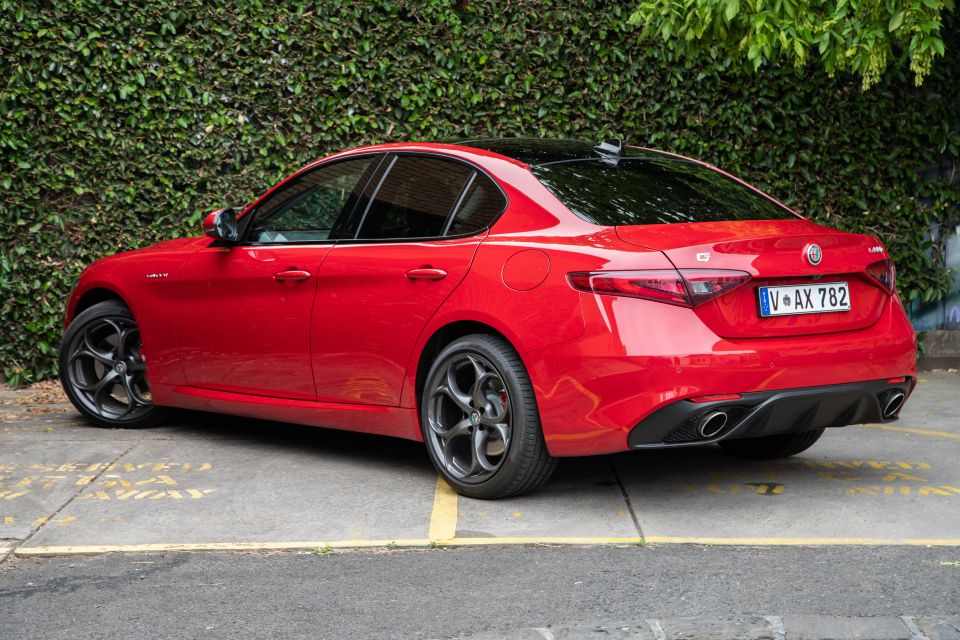

Contributor
New from
$59,895
excl. on-roads

Contributor
New from
$59,895
excl. on-roads


Contributor
New from
$59,895
excl. on-roads

Contributor
New from
$59,895
excl. on-roads
Quickly see how this car stacks up against its competition. Select any benchmark to see more details.
Where expert car reviews meet expert car buying – CarExpert gives you trusted advice, personalised service and real savings on your next new car.
For a brand steeped in history, Alfa Romeo has had a rough trot of late.
After years in the wilderness with a pair of hatchbacks and nothing else, the Giulia sedan was meant to be the car that finally propelled Alfa back into contention with the all-conquering Germans, backed by the Stelvio SUV built on the same platform.
Problem is the Giulia was a class leader from behind the wheel, but it was afflicted with a range of niggles that undermined its appeal as a mainstream alternative to the BMW 3 Series and Mercedes-Benz C-Class at launch.

That’s where the update you see here comes in.
Not much has changed on the outside, but the 2021 Giulia has been treated to a raft of detail changes designed to make it nicer to sit in, easier to drive on the highway, and more appealing to tech heads.
Has Alfa Romeo managed to polish away the rough edges, and created a car that can be recommended caveat-free in the process?
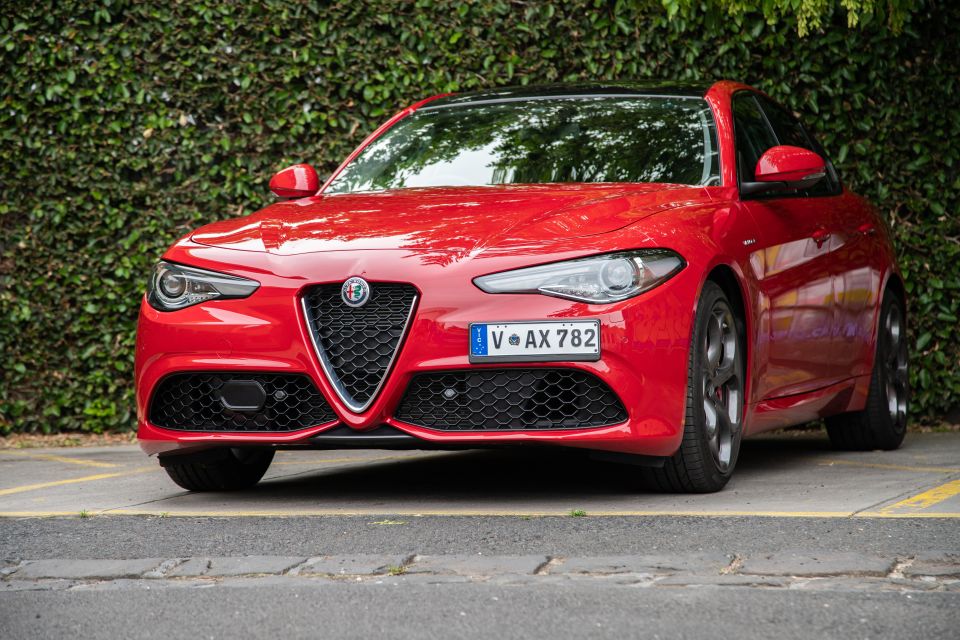
Pricing for the updated Giulia Veloce starts at $71,450 before on-road costs, or around $78,000 once on-road costs are factored in.
Options fitted to our car included a 14-speaker Harmon/Kardon sound system ($1255) and a dual-pane sunroof ($2255) that slashes headroom inside. Avoid it if you’re tall or enjoy wearing a top hat behind the wheel.
That makes it $8100 more expensive than the base Giulia Sport, and puts it into battle with the BMW 320i ($69,900 before on-roads) despite packing an engine and equipment list more in keeping with the more expensive 330i.
It also undercuts the Mercedes-Benz C300 ($77,400 before on-roads). Once a rear-drive challenger for the driver’s sedan crown, the Jaguar XE is now all-wheel drive only and priced at $69,900 drive-away in R-Dynamic Black trim.
Alfa Romeo charges an additional $1355 for metallic paint, or $2755 for its two tri-coat special finishes.
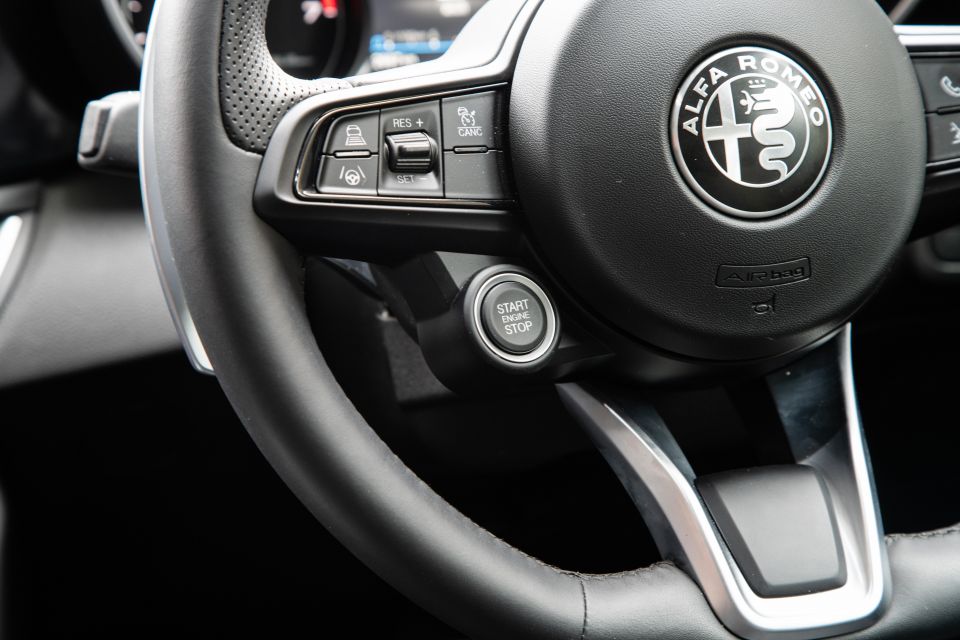
For starters, the Giulia is the prettiest mid-sized sedan on the market. Even the base model is classically beautiful in a way the teutonic BMW 3 Series and Audi A4 (and droopy Mercedes-Benz C-Class) aren’t from the outside, aided in no small part by the 19-inch telephone dial wheels standard on the Veloce.
Finished in gunmetal grey, they’re impressively spindly and barely conceal the red brake calipers hiding behind them. In other words, they’re perfect.
As part of the 2021 upgrade, Alfa Romeo has standardised more equipment including heated, powered front sports seats trimmed in leather, a heated and leather-wrapped steering wheel, adaptive cruise control with traffic jam assist, adaptive high beam, and wireless phone charging.
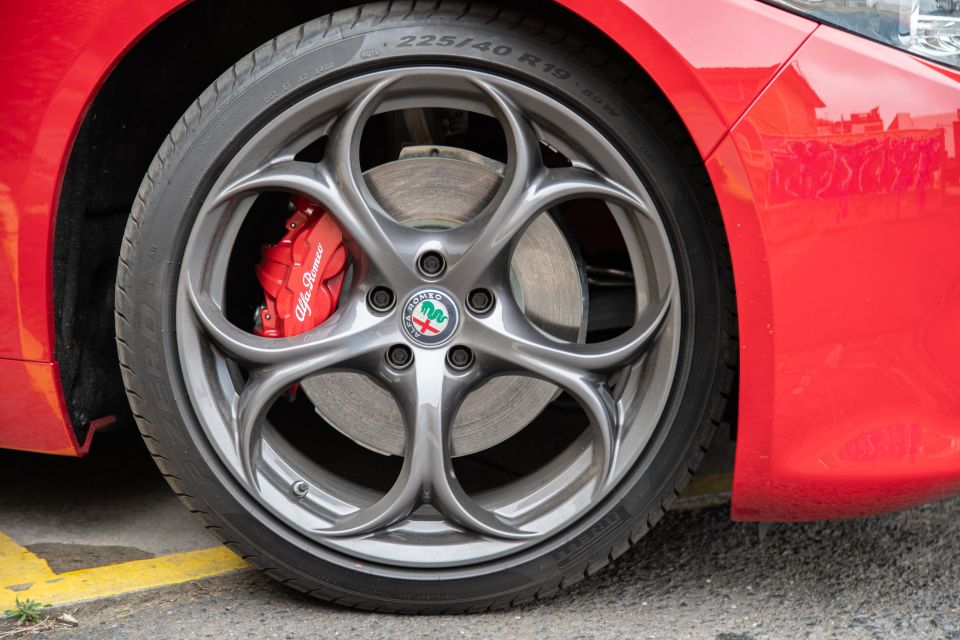
Also standard is a new steering wheel design and keyless entry with push-button start. The big upgrade is undoubtedly the 8.8-inch infotainment touchscreen, which has wired smartphone mirroring and is controlled by a new rotary dial on the transmission tunnel.
It’s running new software which bears more than a passing resemblance to BMW iDrive 6.0, which is no bad thing. Between the dials is a colour trip computer with a digital speedo, but there are no digital dials – nor is there a head-up display, a feature becoming common on European rivals.
Also missing are full-LED headlights, with Alfa Romeo instead opting for more power-hungry bi-xenon illumination on the Veloce.
Moving to the Veloce also gets you adaptive suspension, a bodykit that largely apes that of the fire-breathing Giulia QV, dual exhaust tips, a leather-trimmed dashboard, and heated rear seats. The rear limited-slip differential is carried over from the Giulia Sport, too.
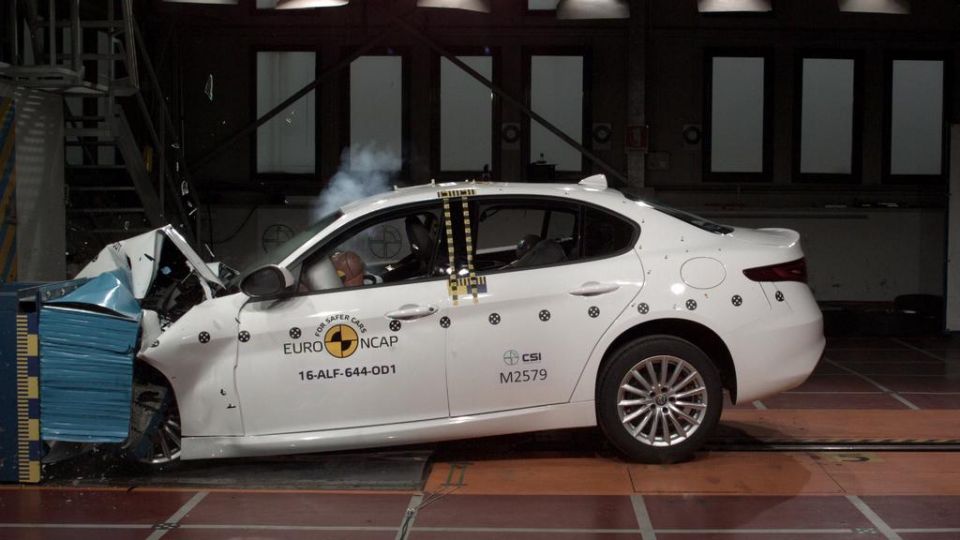
The Giulia wears a five-star rating from ANCAP based on testing carried out by Euro NCAP in 2016.
It scored 98 per cent for adult occupant protection, 81 per cent for child occupant protection, 69 per cent for pedestrian protection, and 60 per cent for safety assist.
Along with dual front, side chest and curtain airbags, the Giulia range features the following active safety technology:
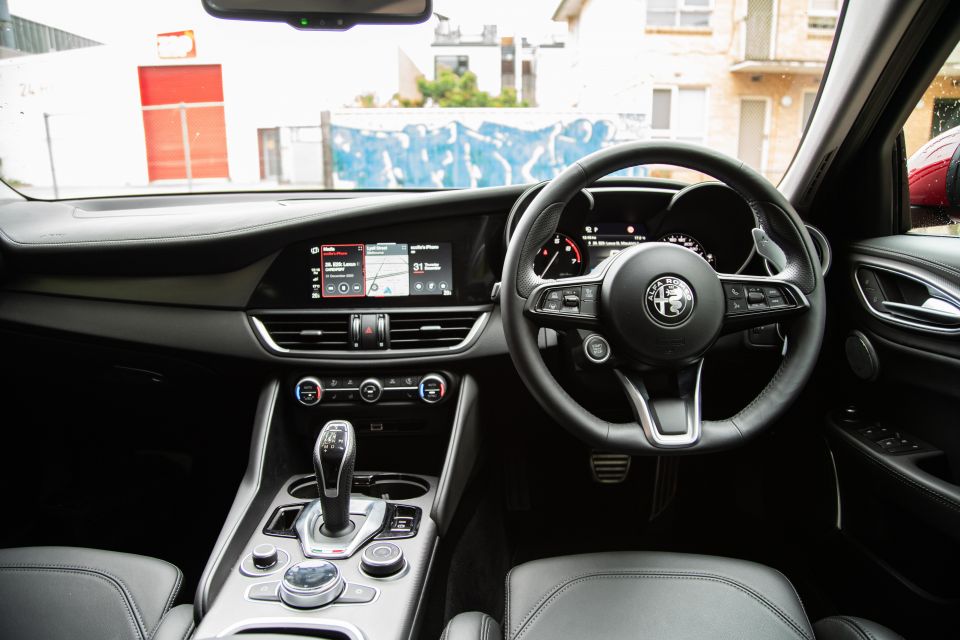
Alfa Romeo hasn’t messed with the layout of the Giulia too much for 2021, which means it’s still handsome and logically set out.
The detail changes are aimed at making the car feel higher quality than before, and they’ve mostly succeeded. For starters, the redesigned transmission tunnel is a step forward from the pre-update car with a cleaner layout and redesigned controller for the infotainment system.
It’s better than before, but it still feels a bit plasticky and toy-like compared to the unit in the BMW 3 Series. Same goes for the DNA drive mode selector and volume knob, neither of which feel particularly solid.
The same again goes for the climate controls which, although sensibly set out and within easy reach, lack the clack-clack precision of the dials in the Audi A4. And don’t get me started on the transmission lever, which could have been designed by Logitech.

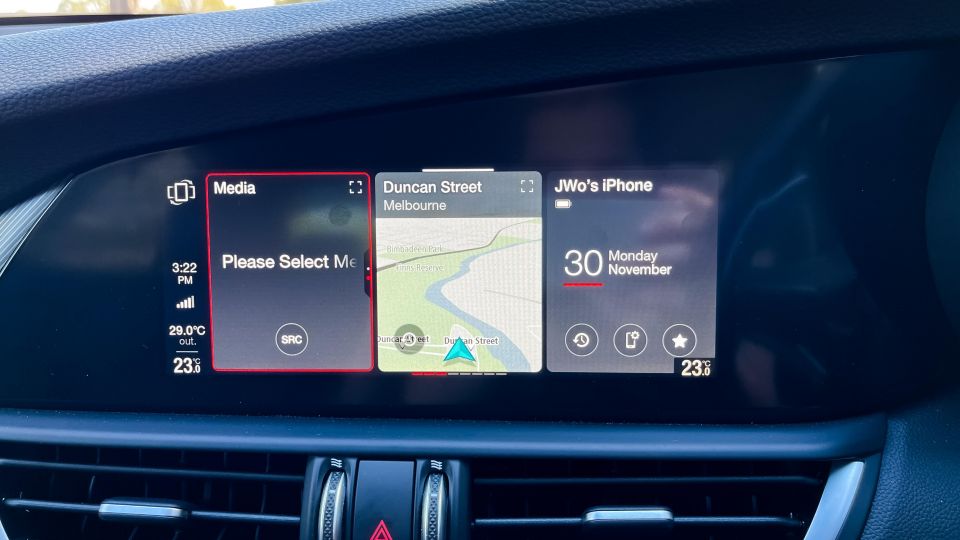
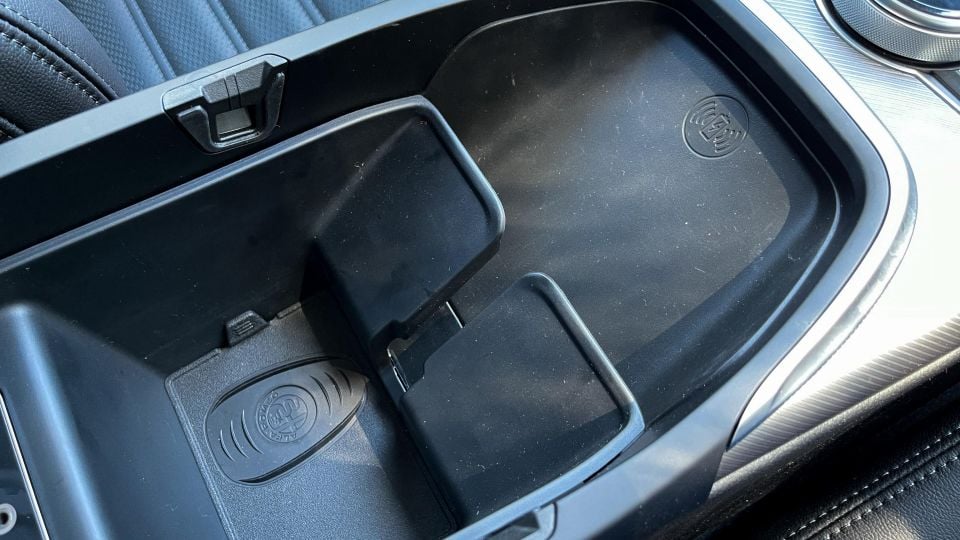
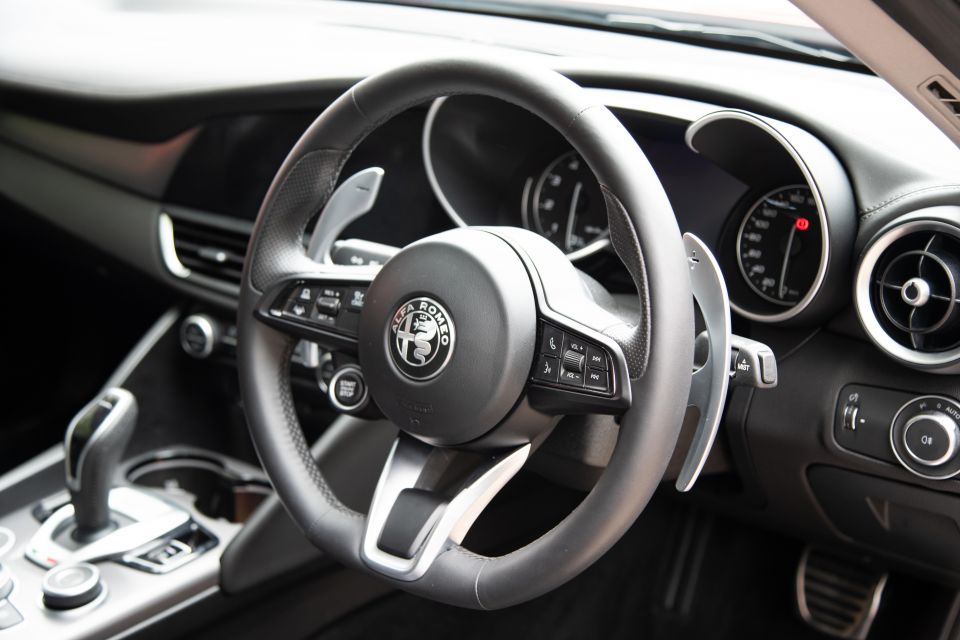

What the Germans can’t match is the tactility of the paddles in the Giulia. They’re giant metal units seemingly nicked from the Ferrari parts bin, and have a beautiful action to them. They’re also cold to the touch when you start the car, something you can’t say about the short-throw plastic paddles common on almost everything German.
Also neat is the fact the starter button is integrated into the steering wheel, also like a Ferrari. You won’t forget the Giulia is Italian in a hurry, especially if you opt for the tan or red leather interior option. Which you should, by the way. Black is boring.
Driver and passenger sit in ribbed, nicely bolstered sports seats complete with the Alfa Romeo crest emblazoned on their headrests. They’re excellent, blending long-trip support with enough (adjustable) bolstering for when you’re feeling a bit racy. The fact they’re heated is nice as well, although it wasn’t particularly relevant to our week with the car over summer.
If you’re tall, steer clear of the sunroof. I realise six-seven isn’t normal height, but my hair was rubbing the roof lining in our tester.
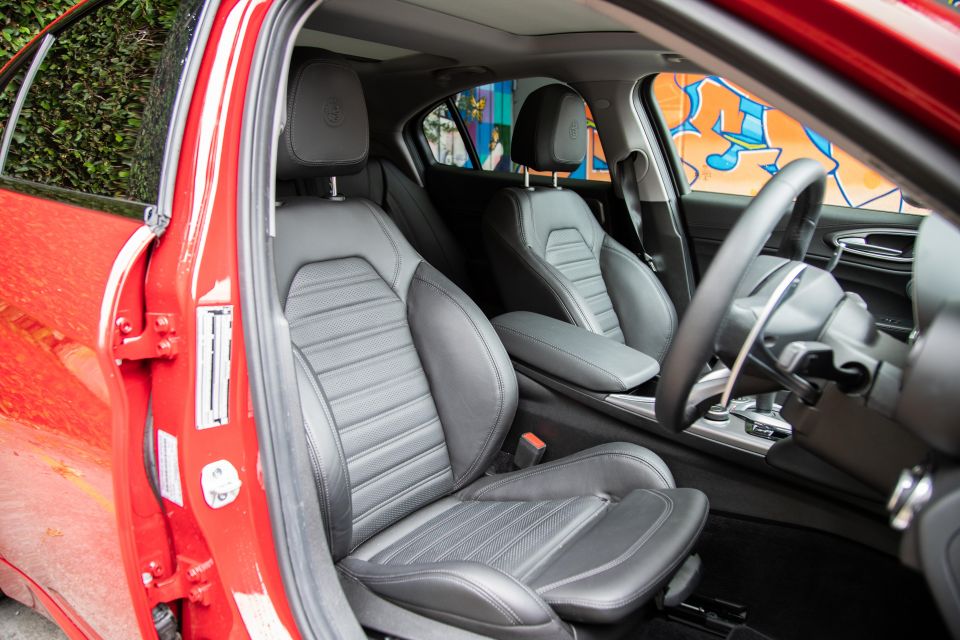

Tall buyers also need to beware of the door pillar positioning. With the seat slid all the way to the rear of its runner, the B-pillar of the car is in line with your hip which makes getting in and out harder than it needs to be, especially in tight shopping centre carparks.
Jeremy Clarkson joked about it in The Grand Tour, but in the real world the Giulia is far harder to get into and out of than it needs to be.
With dual cupholders, a decent storage bin under the dashboard, a spacious central armrest, and an ingenious design for the wireless charger under the armrest, the Giulia isn’t short on storage space.
Alfa has made big strides when it comes to technology. Although the infotainment system in the pre-update Giulia was functional, there was no touchscreen capability and its graphics were basic at best.
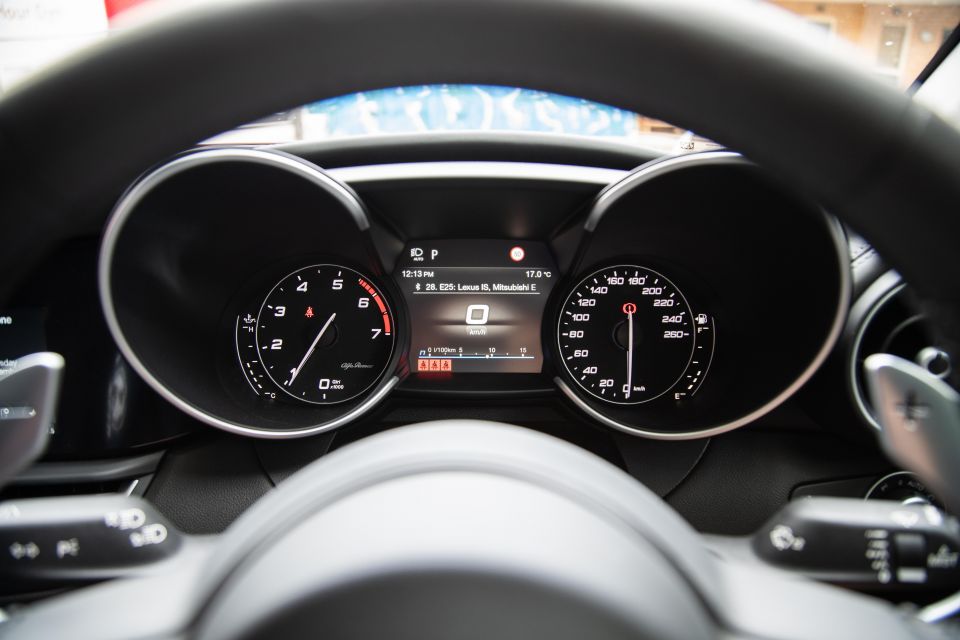
The new system looks far better than before, and is arguably easier than MBUX or BMW OS7.0 to pick up and use straight away.
Purists will also like the fact Alfa Romeo has stuck with its traditional hooded dials in place of a fashionable digital cluster. For me they’re perfect, but some will miss the tech-heavy cool factor that comes with the brilliant Virtual Cockpit in the latest Audi range.
Things aren’t so rosy in the back, where legroom is limited and headroom is severely compromised by the dual-pane sunroof. The fact there are vents, USB ports, and heated outboard seats is nice, but getting the same amount of space offered in a BMW 3 Series would be nicer.
Boot space is 480L with the rear seats in place. Unusually, the interior boot release button is tiny and hidden right down by the driver’s right shin. Wouldn’t it make more sense to put it somewhere prominent?
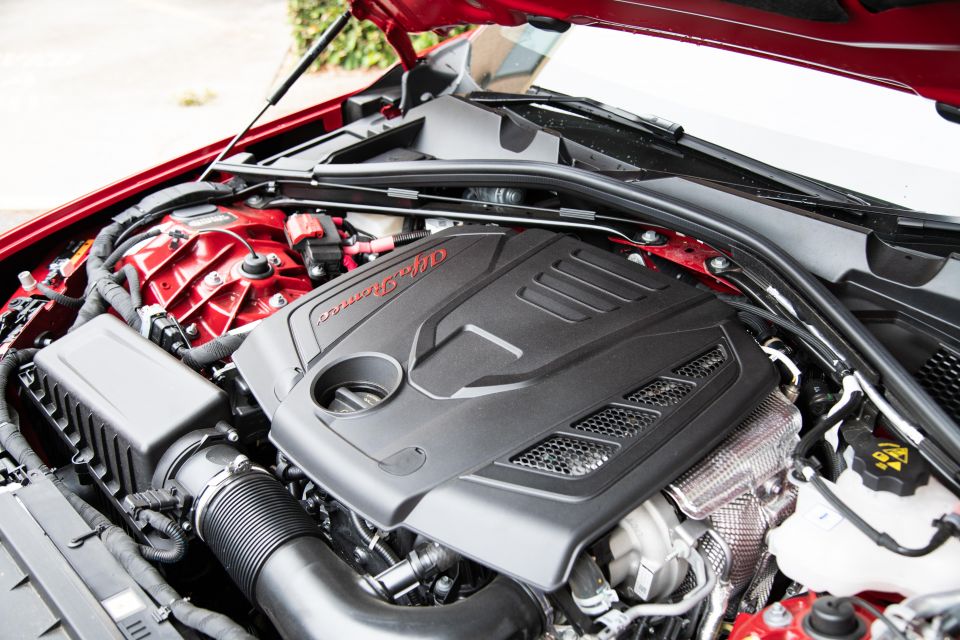
Power in the Giulia Veloce comes from a 2.0-litre turbocharged four-cylinder petrol engine with 206kW and 440Nm, sent to the rear wheels through an eight-speed torque converter from ZF.
The 100km/h sprint takes a claimed 5.8 seconds, and Alfa Romeo fits a limited-slip differential standard to help put that power to the road when you’re really having a crack.
Claimed fuel economy is 6.1L/100km on the combined cycle, although we saw closer to 9.0L/100km with a skew to highway miles.
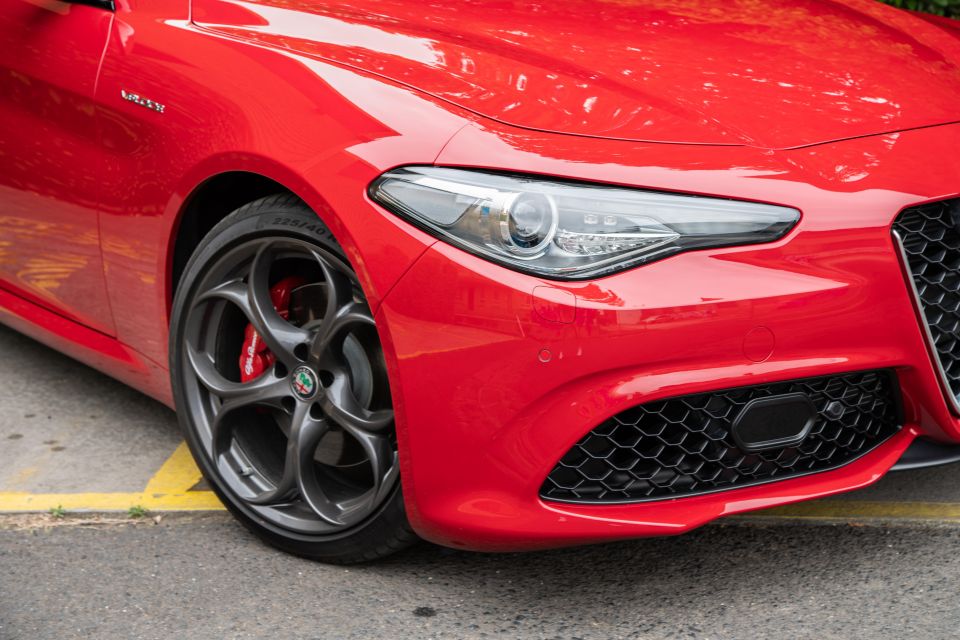
There wasn’t much wrong with how the Giulia drove pre-update, and there’s not much wrong with it after its mid-life refresh.
As cars like the BMW 3 Series, once held up as the high watermark for rear-wheel drive sedans, have become fatter and softer with age, Alfa Romeo has made driving dynamics a clear focus.
That’s immediately clear from behind the shapely steering wheel. The steering is light and immediate, and feels almost hyperactive if you’re not attuned, while the brake pedal is sharp at the top end and requires a gentle touch in town.
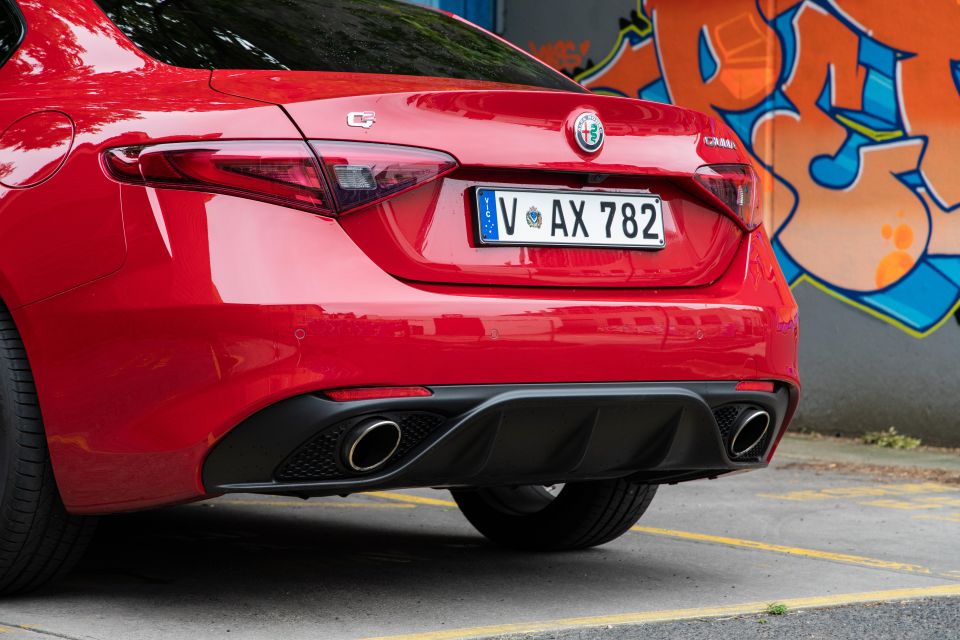
With that said, the brake pedal in the latest Giulia is easier to modulate than the wooden dead pedal in the base turbo-diesel rental I sampled in Switzerland just after launch.
Once you’re dialled in the quick, light controls make the Giulia feel more purposeful to drive than the BMW 3 Series or Audi A4, even if you’re just ducking down to the shops.
Up the pace and the Giulia feels light on its feet, darting into corners with a flick of the wrist and displaying a classic rear-drive balance once you’re there. There’s just a hint of roll before it settles on its outside rear tyre, at which point the driver can squeeze the throttle and revel in the grip on offer.
Understeer? You have to be stupid to find it. Oversteer? Flick the Giulia into a roundabout and mash the throttle and the tail comes into play, but it’s never scary or lairy.
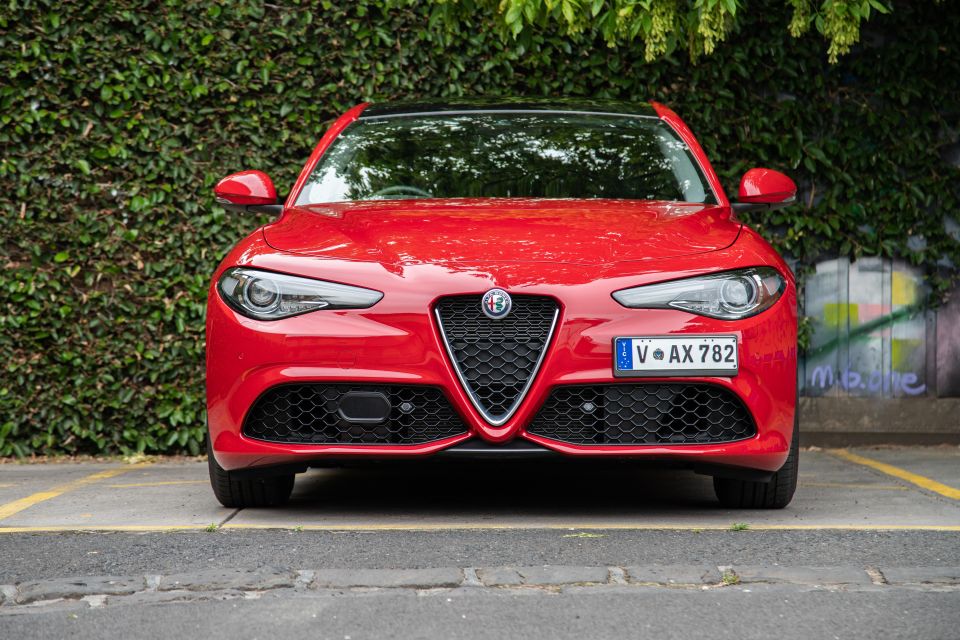
Where expert car reviews meet expert car buying – CarExpert gives you trusted advice, personalised service and real savings on your next new car.
For the most part, the focus on handling hasn’t hurt the Giulia in town. The ride is generally good, although the 19-inch alloy wheels can crash and bash into sharper bumps with less refinement than they perhaps really should.
Backing up the excellent chassis is a smooth, zingy 2.0-litre engine that almost instantly justifies the Veloce’s premium over the entry-level Giulia Sport.
There’s just a hint of lag off idle, but once the shapely tachometer sweeps past around 2000rpm it pulls smoothly and strongly, with the sort of verve not necessarily associated with small, turbo’d engines.
If there’s a weak point it’s the start/stop system, which rips the heart out of the air-conditioning system when active and fires with more of a burst than is expected of a luxury car.
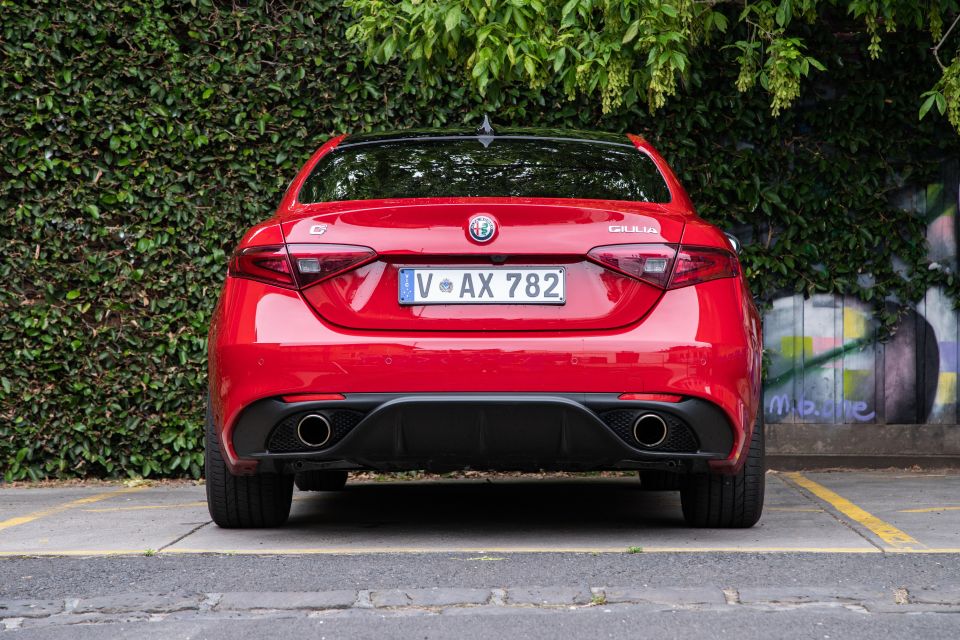
You can’t blame the transmission, which is an excellent eight-speed unit from ZF. It’s almost always in the right gear, and responds quickly to the paddles when you’re in the mood to take charge.
The claimed 100km/h sprint time seems about right, and puts the Giulia on a par with the BMW 330i for performance. In the real world it’s all the punch you’ll ever need – although more engine noise would be welcome in the Giulia’s most aggressive Dynamic mode.
While we’re talking drive modes, Alfa deserves endless praise for allowing owners to flick into Dynamic, with its sharper throttle and gearbox tunes, but dial back the adaptive dampers to their softer setting like a Ferrari.
After all, not all driving roads are smooth. Dynamic makes the transmission a bit hyperactive for day-to-day use, and Adaptive slips the throttle pedal a Zanax and sings it a lullaby to settle it down, so the default Normal mode is best for commuting.

Despite Alfa Romeo fitting staggered, low-profile Pirelli P-Zero performance tyres for 2021, the new Giulia doesn’t fall into the Euro trap of being dead silent on recently resurfaced roads and shouting at the top of its voice on the coarse chip highways common in rural Australia.
Also clear on the highway is the fact Alfa Romeo has clearly put some serious time into tuning its semi-autonomous driver assists. The adaptive cruise is silky smooth, and the active steering assist is just that – an assist.
Unlike some systems, which try to wrest the wheel from your hands at the first hint of a corner, the system in the Giulia is far more subtle. You barely notice it’s there, but it will take charge when required… which is exactly the point.
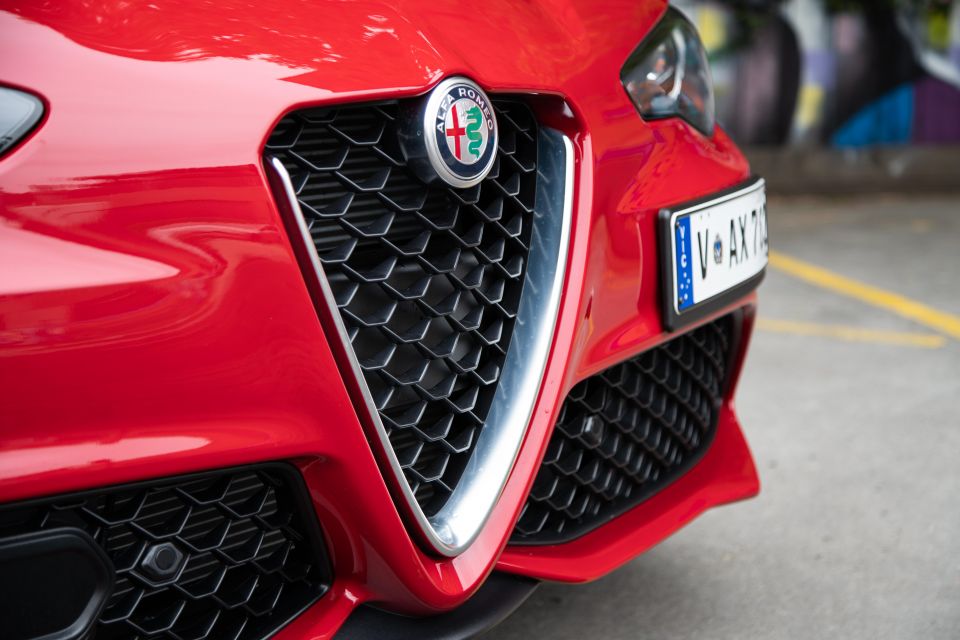
Alfa Romeo hasn’t made the leap to a Mercedes-rivalling five-year warranty, instead sticking with its three-year, 150,000km coverage in Australia.
Maintenance in the Giulia Veloce is required every 15,000km or 12 months, which ever comes first, and service costs are capped at $2865 over the first five years of ownership.
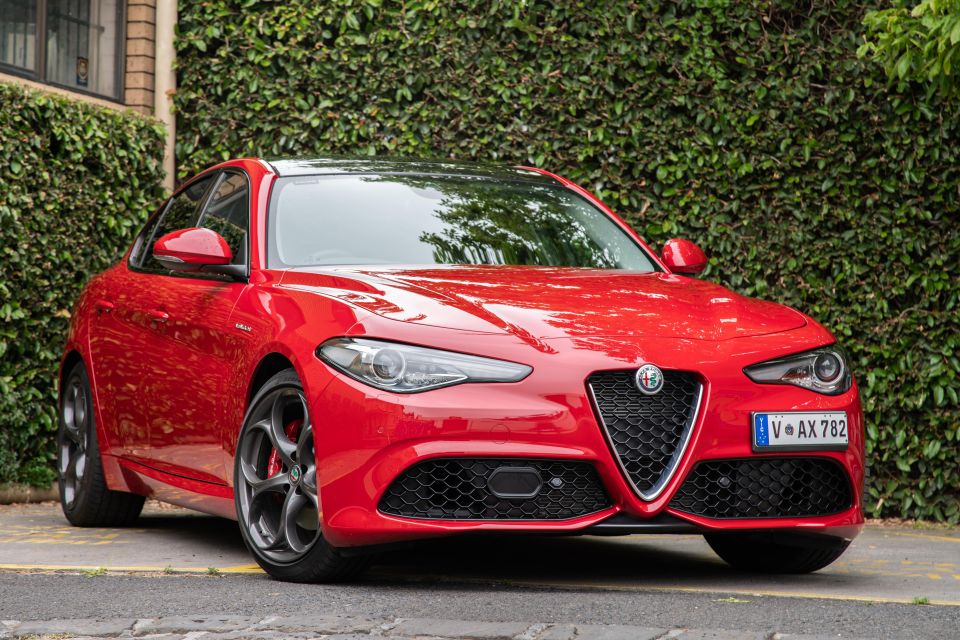
Some of the rough edges have been smoothed, but recommending the Giulia still comes with a few caveats.
Given the Jaguar XE is no longer available with rear-wheel drive, it’s the best mid-sized premium sedan to drive… but the ride can be quite firm.
The interior is better than before and the technology is a big step forward… but it’s still not as tactile as the Germans behind the wheel, and rear seat space is average at best.
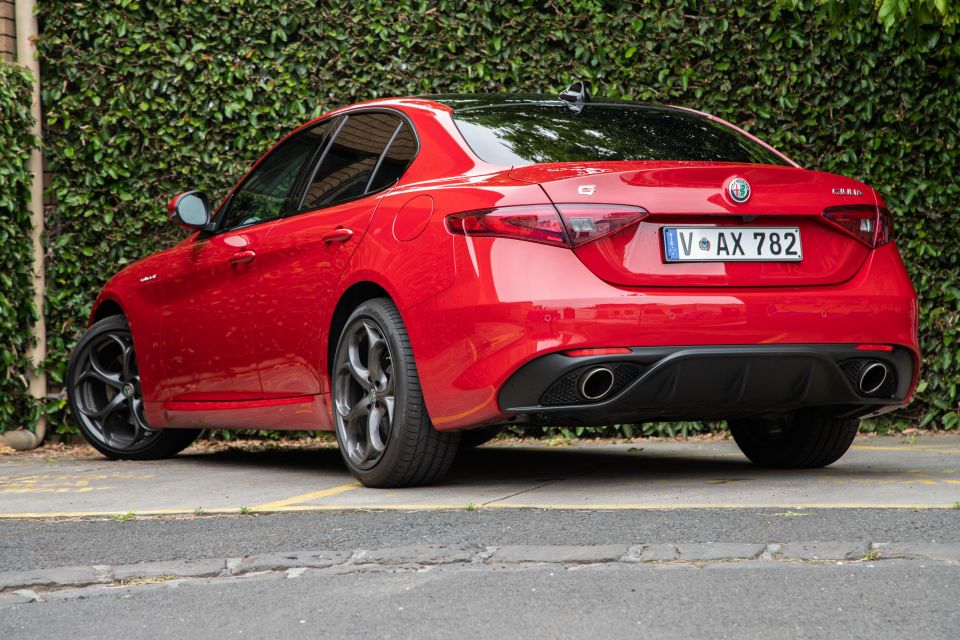
If you can’t look past those flaws, there are plenty of German and British rivals that will suit you better. They might be a bit more boring, but there’s nothing wrong with being practical.
If you think with your heart instead of your head, or prioritise handling above all else, then it’s hard to look past the Giulia Veloce. It’s barely more expensive than the entry-level Sport and packs a much healthier punch, and there’s no denying its kerb appeal.
We’re still looking forward to the day we can recommend an Alfa Romeo without caveats, but the Giulia Veloce is a mighty fine sports sedan in the meantime.
MORE: Alfa Romeo Giulia news and reviews MORE: Everything Alfa Romeo
Where expert car reviews meet expert car buying – CarExpert gives you trusted advice, personalised service and real savings on your next new car.
Scott Collie is an automotive journalist based in Melbourne, Australia. Scott studied journalism at RMIT University and, after a lifelong obsession with everything automotive, started covering the car industry shortly afterwards. He has a passion for travel, and is an avid Melbourne Demons supporter.


Matt Campbell
6 Days Ago


James Wong
5 Days Ago


Max Davies
3 Days Ago


Josh Nevett
2 Days Ago


Josh Nevett
2 Days Ago


Paul Maric
18 Hours Ago